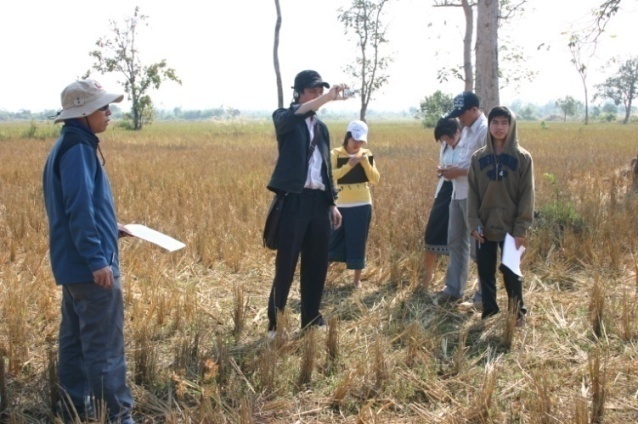Potential Use of ALOS/PALSAR in Flood Extent Mapping - A Case Study in Vientiane Capital Province
Descriptions
In this study, five flood prone districts of the Vientiane Capital province have been considered which were severely affected by the 2008 flood. ALOS/PALSAR data have been used to take the advantage of its all weather as well as day and night acquisition capabilities. The underlying methodology was to examine the changes in the backscatter coefficients from dry to wet conditions. While analyzing ALOS/PALSAR FBD (Fine Beam Dual) mode, a significant change of the physical properties of objects on the ground was found when there is a 3.0 dB change in the backscatter coefficients from dry to wet condition. After the initial analysis, three masks (+3db, 0, -3db) for change detection were prepared for the HH and HV pairs of dry and wet ALOS/PALSAR datasets. 3 dB masked images of HV and HH were compared and ROIs (Region of Interest) were selected in areas where there were significant changes from HV to HH polarization. Twenty three such ROIs were picked up for field verifications and the possible causes of changes from dry to wet season images were examined. It was found that there were mainly three areas where such changes were taking place; 1) floods in the paddy field, 2) increase of moisture in the tree canopy during wet season and 3) flood in open areas. The next step was to measure the changes in backscatter coefficients from dry to wet season in some of the known landuse classes. While selecting the ROIs from these classes, care was taken to preserve their homogeneity. From the backscatter statistics, it was found that the HH polarization had an advantage over the HV polarization for flood mapping in open grounds as well as in paddy fields. For all the other landuse classes no conclusion could be drawn. Results showed that 19 km2 paddy fields and 31 km2 of open areas were flooded respectively by flood in 2008. The largest area under flood was in Xaysettha district with 34% of land under the flood water, followed by 32% submergence in Hadxaiphog district.

